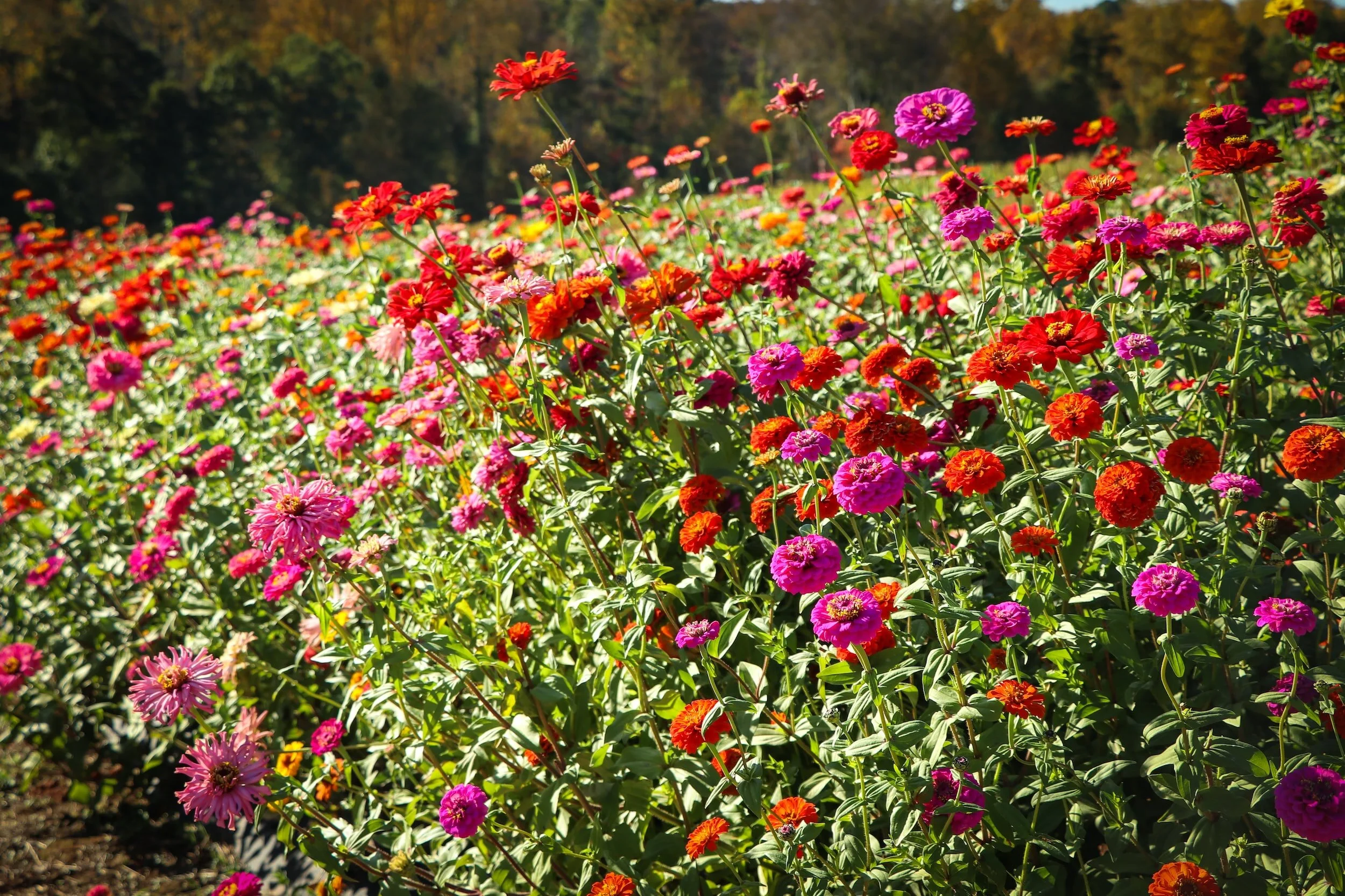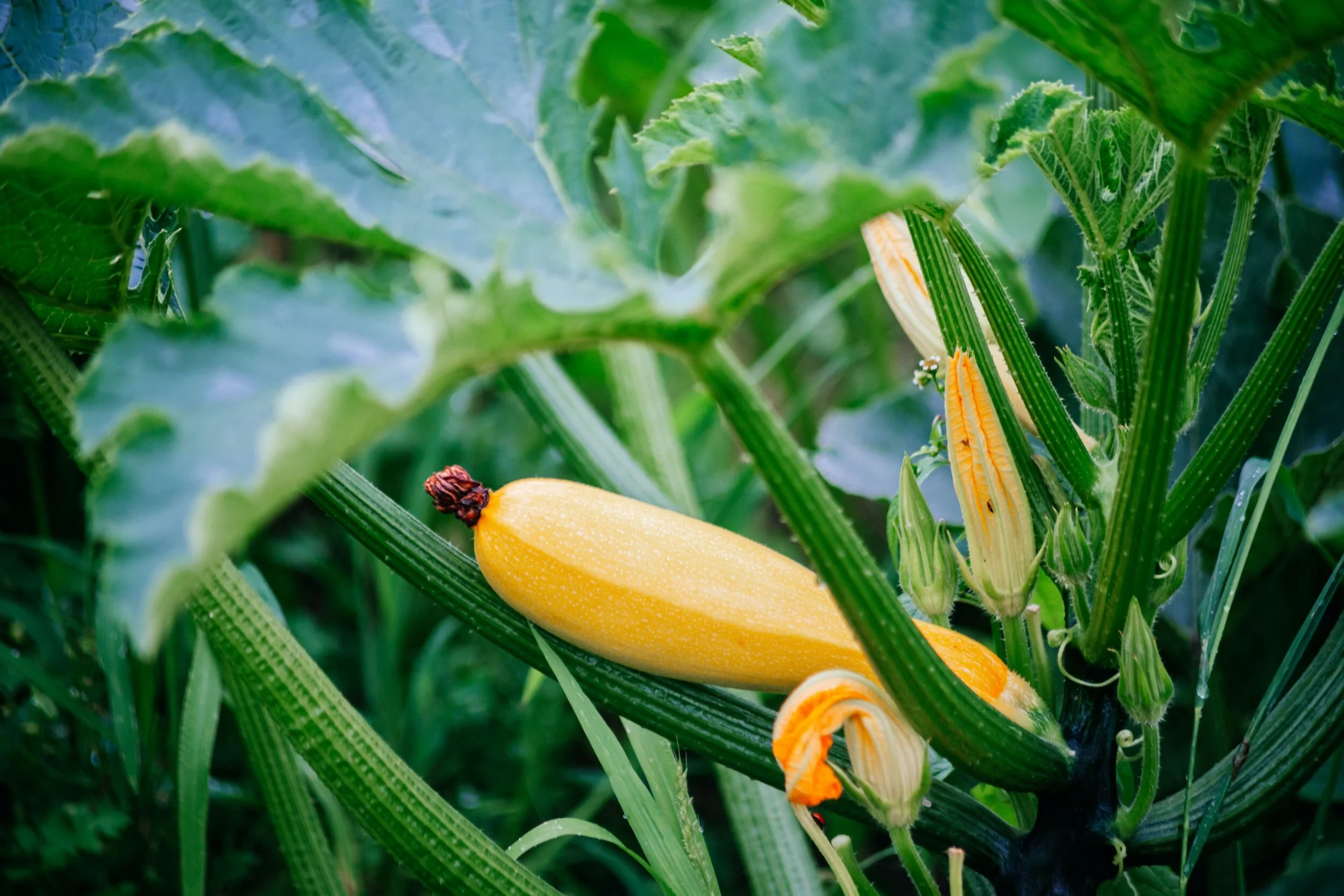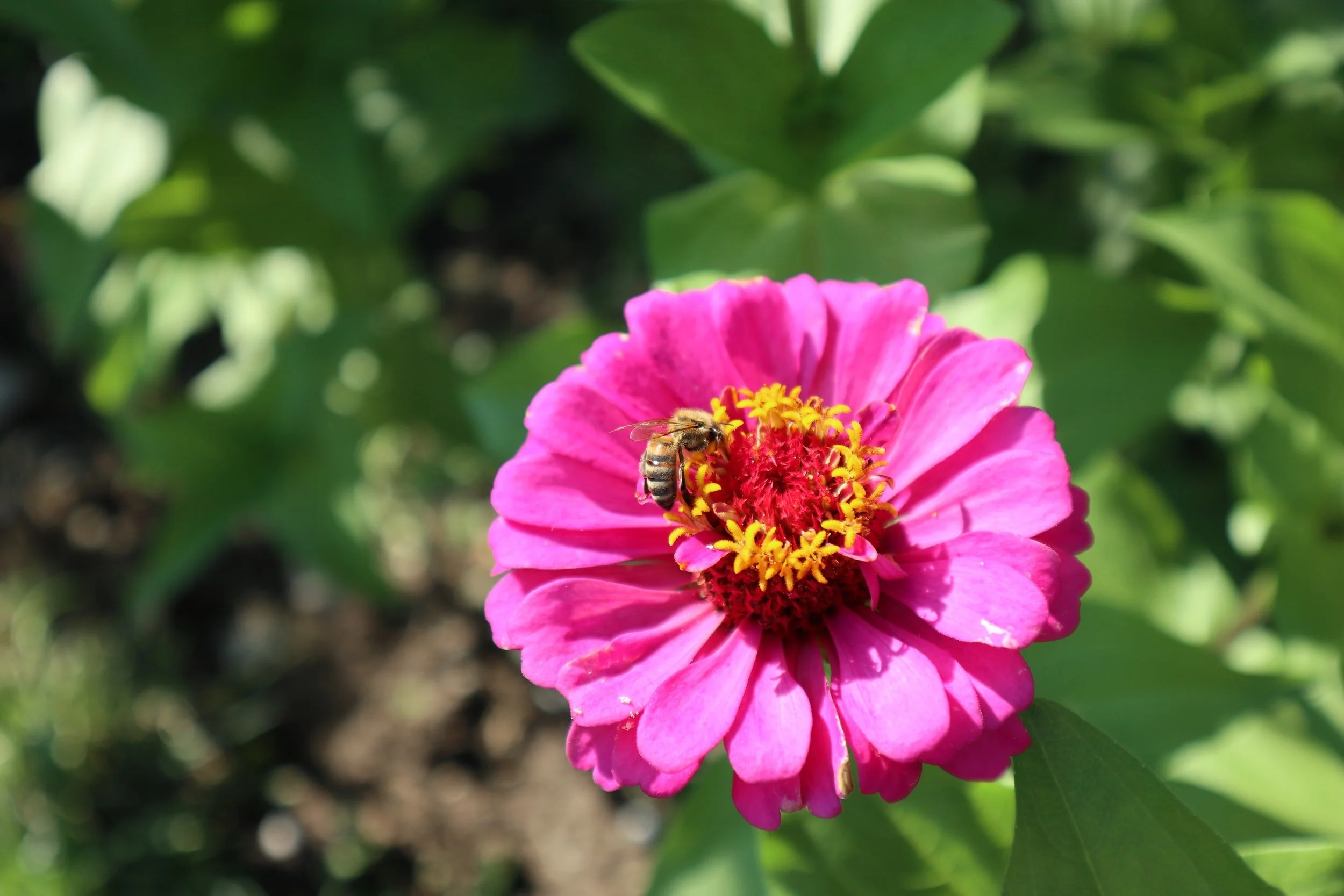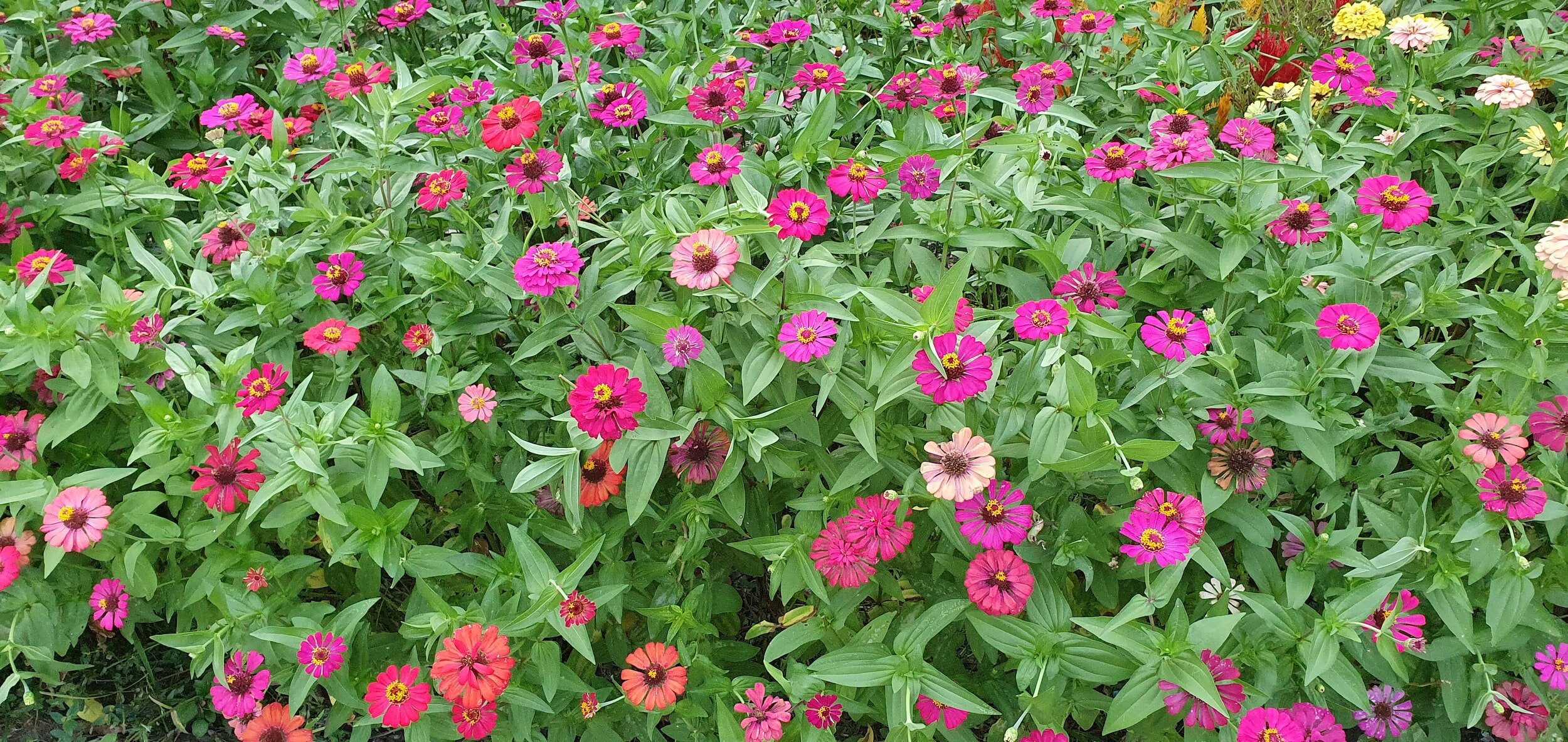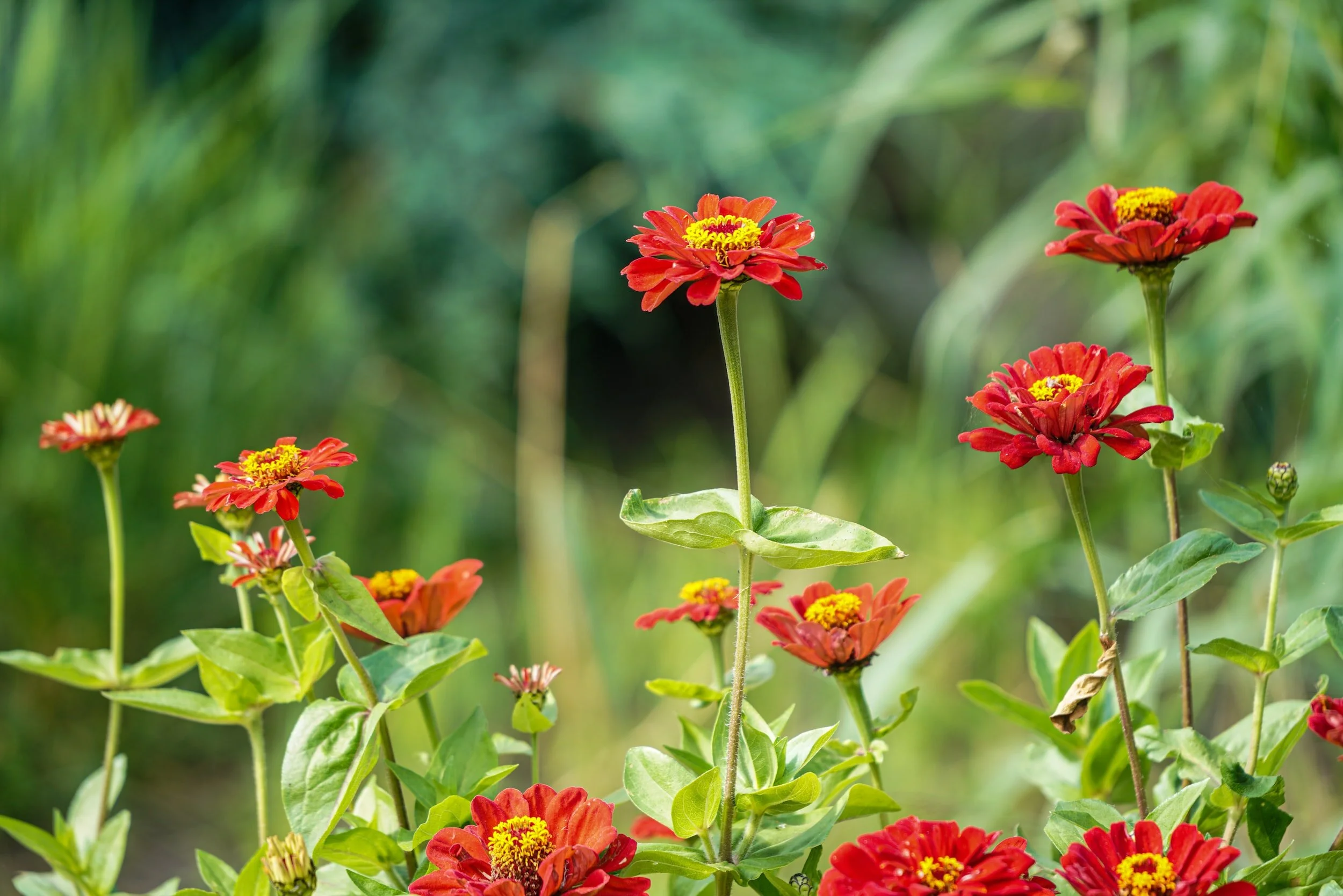Zinnia Companion Plants: Enhancing Biodiversity
This article has links to products that I may make commission from.
When it comes to creating a vibrant and flourishing garden, choosing the right companion plants can make all the difference.
Zinnias, with their stunning blooms and versatility, serve as excellent focal points.
However, to truly maximize their potential, it's essential to consider zinnia companion plants that not only complement their beauty but also contribute to a healthy and productive garden ecosystem.
Here we will explore a diverse range of companion plants for zinnias and delve into the benefits they bring, from attracting beneficial insects to improving soil quality.
To learn more about growing zinnias, check out my guides:
The Best Zinnia Companion Flowers
Marigolds (Tagetes spp.)
Marigolds are one of the classic companions for zinnias.
They help deter pests such as nematodes and repel aphids, whiteflies, and other harmful insects.
Marigolds also attract beneficial insects like ladybugs and lacewings, which prey on garden pests.
My recommended marigold seeds:
For more inspiration, check out my guide:
Cosmos (Cosmos bipinnatus)
Cosmos is a popular companion plant for zinnias due to its complementary growth habits and ability to attract pollinators.
Both zinnias and cosmos have similar preferences for full sun and well-drained soil.
Together, they create a visually stunning display of flowers and attract a wide variety of pollinators.
Check out my guide: Container Cosmos: How to Grow Cosmos in Small Spaces.
My recommended cosmos seeds:
Start your own cut flower garden with my guide:
Nasturtiums (Tropaeolum spp.)
Nasturtiums are excellent companion plants for zinnias, as they deter pests like aphids and whiteflies.
Their bright flowers and round leaves create a visually appealing contrast with zinnias.
Additionally, nasturtiums are edible and make a delightful addition to salads or garnishes.
Learn more about Utilizing Nasturtium Companion Plants for Natural Pest Control.
My recommended nasturtium seeds:
Sunflowers (Helianthus spp.)
Sunflowers and zinnias make a striking combination in the garden.
Sunflowers provide structural height and support for zinnias, while zinnias add vibrant colors and a contrasting texture to the sunflower bed.
Sunflowers also attract beneficial insects and serve as a food source for birds.
Learn more about The Best Time to Plant Sunflowers.
My recommended sunflower seeds:
Salvia (Salvia spp.)
Salvias, such as the perennial Salvia nemorosa or the annual Salvia farinacea, are attractive companions for zinnias.
They share similar requirements for full sun and well-drained soil.
Salvias' tall spiky flowers and aromatic foliage add vertical interest and attract pollinators like bees and hummingbirds.
Learn more about Pruning Salvias: How to Prune for Abundant Flowers and Growing Vibrant Salvia in Pots.
Here is the salvia variety I recommend growing with zinnias:
Sweet Alyssum (Lobularia maritima)
Sweet Alyssum is a low-growing, fragrant companion plant that pairs well with zinnias in borders or containers.
Its delicate flowers attract beneficial insects and serve as a ground cover, suppressing weed growth and retaining soil moisture.
Here are the sweet alyssum seeds I recommend:
Verbena (Verbena spp.)
Verbena is a colorful companion plant that complements zinnias' blooms.
Its clusters of flowers attract butterflies and bees while providing a long-lasting display of color throughout the growing season.
Here is the verbena I recommend growing:
Remember to consider factors such as light requirements, growth habits, and bloom times when selecting companion plants for zinnias.
By choosing plants that harmonize well with zinnias, you can create a beautiful garden while promoting beneficial insect activity, deterring pests, and enhancing pollination.
For more ideas, check out my guides:
The Best Zinnia Companion Vegetables
Zinnias can be wonderful companions for certain vegetables in the garden, providing not only beauty but also functional benefits.
Here are some of the best zinnia companion vegetables:
Tomatoes (Solanum lycopersicum)
Zinnias and tomatoes are a fantastic pairing in the garden.
Zinnias attract pollinators that aid in tomato pollination, leading to better fruit set and higher yields.
Additionally, the vibrant colors of zinnias can create a striking contrast with the green foliage and colorful fruits of tomato plants.
Learn how to Grow Tomatoes Anywhere with Grow Bags.
My recommended tomato seeds:
Peppers (Capsicum spp.)
Zinnias can be beneficial companions for peppers as well.
Similar to tomatoes, zinnias attract pollinators that help with pepper pollination.
The presence of zinnias in the garden can enhance overall pollination rates and increase pepper yields.
Additionally, the beauty of zinnias adds visual interest to the pepper patch.
Check out my guide: Growing Jalapeños in Pots: A Spicy Addition to Your Garden.
My recommended pepper seeds:
Cucumbers (Cucumis sativus)
Zinnias can provide several advantages when grown alongside cucumbers.
Zinnias attract pollinators like bees, which are essential for cucumber pollination and the production of healthy fruits.
The combination of zinnias and cucumbers can create a vibrant and buzzing area of the garden while ensuring good pollination and increased cucumber harvests.
My recommended cucumber seeds:
Beans (Phaseolus vulgaris)
Zinnias can serve as beneficial companions for beans.
Zinnias attract pollinators that aid in bean pollination, leading to improved bean production.
Moreover, the bright flowers of zinnias can provide a visually appealing backdrop to the climbing beans and add a pop of color to the garden.
My recommended bean seeds:
Squash and Zucchini (Cucurbita spp.)
Zinnias can be great companions for squash and zucchini plants.
By attracting pollinators, zinnias help ensure proper pollination and increased fruit formation.
The combination of zinnias' vibrant blooms and the lush foliage of squash and zucchini can create a beautiful garden space.
Check out my guide on When to Harvest Butternut Squash.
My recommended squash seeds:
When selecting zinnia companion vegetables, consider the specific growing requirements of each plant, such as sun exposure, water needs, and spacing.
Ensure that both zinnias and the companion vegetables have compatible growth habits and can coexist without overcrowding or competing for resources.
By integrating zinnias with these vegetable crops, you can enhance pollination, beautify your garden, and potentially increase yields.
For more companion planting tips, check out my guides:
Attracting Beneficial Insects and Promoting Biodiversity
One of the key advantages of incorporating companion plants alongside zinnias is their ability to attract beneficial insects, which play a vital role in maintaining a balanced garden ecosystem.
Beneficial insects encompass a wide range of species, including pollinators like bees, butterflies, and hummingbirds, as well as predatory insects such as ladybugs, lacewings, and parasitic wasps.
Zinnias, with their showy and brightly colored flowers, naturally allure pollinators with their abundant nectar and pollen.
By planting zinnias in your garden, you create a welcoming environment for these important pollinators, ensuring successful pollination of other flowering plants, including fruits and vegetables.
This, in turn, leads to higher crop yields and increased biodiversity.
Companion plants, such as Purple Fountain Grass, can further enhance the attractiveness of your garden to beneficial insects.
The feathery plumes and elegant structure of Purple Fountain Grass create a habitat that supports various insect species.
Pollinators are drawn to the grass for its additional nectar sources, while predatory insects find refuge in its foliage, using it as a base from which they can hunt and control pest populations.
Attracting beneficial insects through companion planting not only aids in pollination and natural pest control but also promotes biodiversity within your garden. Biodiversity is essential for a healthy and sustainable ecosystem, as it fosters resilience against pests, diseases, and environmental fluctuations.
By creating an environment that welcomes a diverse range of insects, you establish a harmonious balance that benefits the entire garden ecosystem.
To maximize the benefits of attracting beneficial insects, it's important to provide a variety of flowering plants throughout the growing season.
This ensures a continuous food source for these insects and encourages them to stay in your garden.
By selecting companion plants that bloom at different times and have overlapping flowering periods, you can create a diverse and vibrant landscape that attracts and supports beneficial insects year-round.
To sum up, incorporating companion plants alongside zinnias can greatly contribute to attracting beneficial insects and promoting biodiversity in your garden.
By providing a welcoming environment for pollinators and predatory insects, you enhance pollination, naturally control pests, and establish a resilient and thriving ecosystem.
Embracing the power of companion planting and attracting beneficial insects is a sustainable and effective approach to gardening that benefits both your plants and the environment as a whole.
My favorite Zinnia Seeds:
Companion Planting: A Recipe for Success
Companion planting is a time-honored gardening technique that involves strategically pairing plants that can benefit and support each other's growth.
By selecting compatible companion plants, you can create a harmonious garden ecosystem that maximizes the health and productivity of your plants.
When it comes to zinnias, companion planting offers numerous advantages, including improved pest management, enhanced pollination, and increased nutrient uptake.
Pest Management
One of the key benefits of companion planting with zinnias is the ability to naturally manage pests.
Certain companion plants emit scents or substances that repel or confuse pests, reducing the risk of infestations and minimizing the need for chemical interventions.
For example, planting marigolds alongside zinnias acts as a natural pest deterrent, particularly against nematodes, which can cause damage to plant roots.
This combination creates a protective barrier that helps safeguard your zinnias and other neighboring plants.
Pollination
Zinnias are known for attracting pollinators with their vibrant colors and abundant nectar.
By incorporating companion plants that also attract pollinators, you can enhance the pollination process in your garden.
This leads to improved fruit set and higher crop yields, particularly in vegetable gardens where pollination is crucial.
Consider planting zinnias alongside basil, which not only attracts bees but also enhances the flavor of neighboring tomatoes and peppers through a process known as "companion flavoring."
Nutrient Uptake
Companion plants can also play a role in improving nutrient uptake in the garden.
Some plants have deep root systems that can access nutrients from deeper soil layers and bring them closer to the surface, benefitting shallow-rooted zinnias.
For instance, planting legumes like beans or peas as companions can fix nitrogen in the soil, enriching it and providing a valuable nutrient source for zinnias and other neighboring plants.
Weed Suppression
Another advantage of companion planting is its potential to suppress weeds.
By utilizing the space around zinnias with low-growing companion plants, such as creeping thyme or ground cover plants, you can create a living mulch that helps shade the soil and suppress weed growth.
This reduces competition for resources and minimizes the need for excessive weeding.
When implementing companion planting with zinnias, it's essential to consider the specific requirements of both the zinnias and their companions.
Factors such as light requirements, soil preferences, and growth habits should be taken into account to ensure compatibility and successful coexistence.
In conclusion, companion planting with zinnias offers a recipe for gardening success.
By strategically selecting compatible plants, you can enhance pest management, promote pollination, improve nutrient availability, and suppress weeds.
This holistic approach to gardening fosters a healthy and productive garden ecosystem, allowing your zinnias and their companions to thrive in harmony.
So, get creative and explore the endless possibilities of companion planting to unlock the full potential of your garden.
For more companion planting inspiration:
Choosing the Right Companions for Zinnias
When selecting companion plants for your zinnias, it's important to choose varieties that not only aesthetically complement each other but also share similar growth requirements and provide mutual benefits.
By carefully considering the characteristics of both zinnias and their companion plants, you can create harmonious plant combinations that thrive together.
Here are some factors to consider when choosing the right companions for your zinnias:
Light and Soil Requirements
Zinnias thrive in full sun, requiring at least 6-8 hours of direct sunlight daily.
Therefore, it is crucial to select companion plants that have similar light requirements.
Look for plants that also prefer full sun or can tolerate it well.
Additionally, zinnias prefer well-drained soil.
Consider companion plants that share this preference to avoid waterlogged soil conditions that can hinder zinnia growth.
Bloom Times and Flower Shapes
When selecting companions for zinnias, it's beneficial to choose plants with staggered bloom times and different flower shapes.
This ensures a continuous display of color and attracts a diverse range of pollinators throughout the growing season.
For example, pairing zinnias with geums provides an attractive contrast in flower shape and extends the period of pollinator attraction in the garden.
Height and Growth Habits
Consider the height and growth habits of both zinnias and their companion plants to create visually appealing combinations.
Taller companion plants, such as sunflowers or tall varieties of salvias, can serve as a beautiful backdrop for zinnias.
Additionally, vining plants like morning glories or beans can be trained to climb trellises or supports, creating vertical interest and making efficient use of garden space.
Pest and Disease Resistance
Some companion plants are known to possess natural pest-repellent properties or attract beneficial insects that help control pests.
Choosing pest-resistant companions can provide an added layer of protection for your zinnias.
Marigolds, for instance, emit a scent that repels certain pests, while attracting beneficial insects that prey on harmful pests.
Complementary Functions
Consider the functional aspects of companion plants in relation to zinnias.
Some companions can act as trap crops, diverting pests away from zinnias.
For example, planting nasturtiums or radishes nearby can attract pests like aphids or flea beetles, drawing them away from zinnias.
Similarly, herbs like basil or dill can serve as companion plants, attracting beneficial insects and enhancing the flavor of neighboring crops.
Remember to also consider your personal preferences and the overall design aesthetics of your garden when selecting companions for zinnias.
Experiment with different combinations and have fun exploring the possibilities.
By choosing the right companions, you can create visually stunning and ecologically beneficial plantings that enhance the beauty and productivity of your zinnia garden.
Optimizing Soil Quality and Drainage
Creating optimal soil conditions is essential for the healthy growth of zinnias and their companion plants.
Proper soil quality and drainage contribute to improved root development, nutrient uptake, and overall plant vigor.
Here are some considerations for optimizing soil quality and drainage in your garden:
Well-Drained Soil
Zinnias thrive in well-drained soil, as excessive moisture can lead to root rot and other fungal diseases.
Ensure that the soil in your garden has good drainage by avoiding compacted or heavy clay soils that retain water.
If your soil tends to be heavy or poorly drained, consider amending it with organic matter, such as compost, to improve its structure and drainage capacity.
Soil Testing
Conducting a soil test before planting zinnias and their companions can provide valuable insights into the nutrient levels and pH of your soil.
Based on the results, you can make targeted amendments to optimize soil fertility.
Zinnias generally prefer slightly acidic to neutral soil with a pH range of 6.0 to 7.0.
Adjusting the pH to the appropriate range can ensure optimal nutrient availability for your plants.
Here is the soil pH tester I recommend:
Organic Matter
Incorporating organic matter into your soil is a beneficial practice for improving soil quality.
Compost, well-rotted manure, or other organic materials can enhance soil structure, increase water-holding capacity, and promote nutrient availability.
Add a layer of organic matter to the topsoil and gently incorporate it into the planting area before sowing or transplanting your zinnias and their companions.
Mulching:
Applying a layer of organic mulch around your plants can help maintain soil moisture, regulate soil temperature, suppress weed growth, and improve overall soil health.
Use organic materials like straw, wood chips, or shredded leaves as mulch, ensuring that it is spread evenly around the base of your plants.
Mulching also contributes to the gradual breakdown of organic matter, enriching the soil over time.
Check out my guide: The Best Alternatives to Traditional Mulch for Your Garden.
Crop Rotation
Practicing crop rotation is another effective technique for optimizing soil quality.
Avoid planting zinnias and their companion plants in the same location year after year, as it can deplete specific nutrients and increase the risk of soilborne diseases.
Rotate the planting areas for different plant families to prevent nutrient imbalances and maintain overall soil health.
Watering Practices:
Proper watering practices are crucial for maintaining soil quality and drainage.
Overwatering can lead to waterlogged soil, while underwatering can result in dry and nutrient-deficient conditions.
Water zinnias and their companions deeply and infrequently, allowing the soil to dry out slightly between waterings.
This encourages deeper root growth and helps prevent soil compaction.
For more watering tips, check out my guide How to Use Watering Globes.
Check out my guides:
FAQs
Can you plant zinnias and marigolds together?
Yes, zinnias and marigolds can be planted together as they make excellent companions.
Marigolds help repel pests and attract beneficial insects, while zinnias attract pollinators and provide a beautiful visual contrast.
This combination can enhance the health and beauty of your garden while promoting a thriving ecosystem.
How to plant zinnias and cosmos together?
Planting zinnias and cosmos together is a straightforward process.
Start by preparing the soil, ensuring it is well-drained and amended with compost or organic matter.
Space the plants according to their specific requirements, generally about 12-18 inches apart.
You can sow the seeds directly into the soil or transplant seedlings.
Water the plants thoroughly after planting and maintain regular watering throughout the growing season.
Both zinnias and cosmos prefer full sun, so make sure they receive adequate sunlight for optimal growth and blooming.
Can you plant zinnias and petunias together?
While zinnias and petunias can be planted together, it's important to note that they have different care requirements.
Zinnias thrive in full sun, while petunias can tolerate partial shade.
If planting them together, ensure they receive the appropriate amount of sunlight based on the needs of each plant.
Additionally, consider the watering requirements of each plant, as zinnias prefer moderate watering while petunias often need more frequent watering.
As long as their specific needs are met, zinnias and petunias can create a beautiful combination in the garden.
To learn more about growing petunias, check out my guide How to Fertilize Petunias So They Bloom Like Never Before.
Can Zinnias grow in shade?
Zinnias are known for their preference for full sun.
While they can tolerate some partial shade, their growth and blooming may be significantly affected.
In shaded conditions, zinnias may become leggy and produce fewer flowers.
To ensure the best performance, it's recommended to plant zinnias in an area that receives at least 6-8 hours of direct sunlight per day.
This will promote robust growth, vibrant blooms, and an overall healthier zinnia plant.
Wrap-Up
Growing zinnias is a rewarding experience that goes beyond their beauty.
These vibrant flowers not only captivate with their beauty but also serve as key contributors to a flourishing garden ecosystem.
By deliberately selecting companion plants, you can nurture the growth of zinnias while simultaneously enhancing the health, diversity, and productivity of your garden.
Whether it's attracting beneficial insects to support pollination, optimizing soil quality to bolster plant nutrition, or embracing the art of companion planting, zinnias truly shine as exceptional team players.
Don't hesitate to explore various companion plant combinations and unlock the full potential of your garden through the art of growing zinnias.
